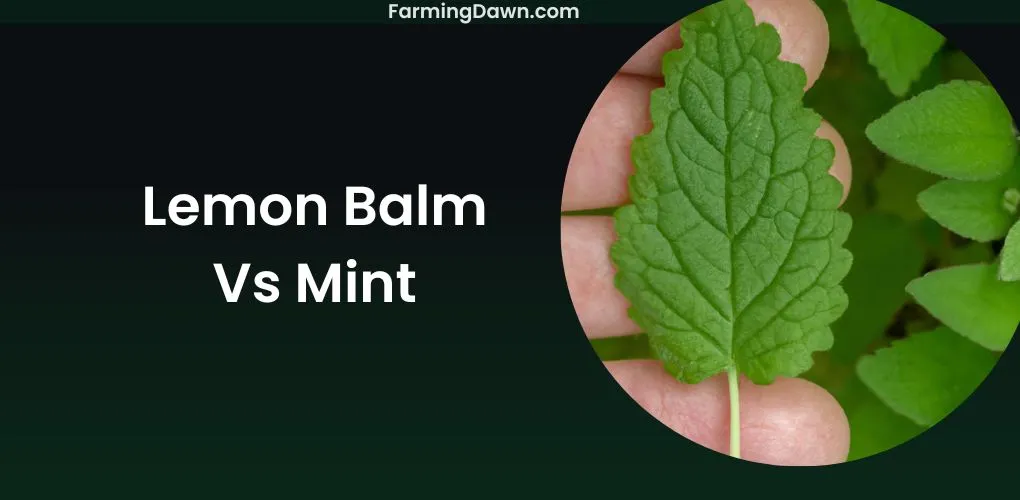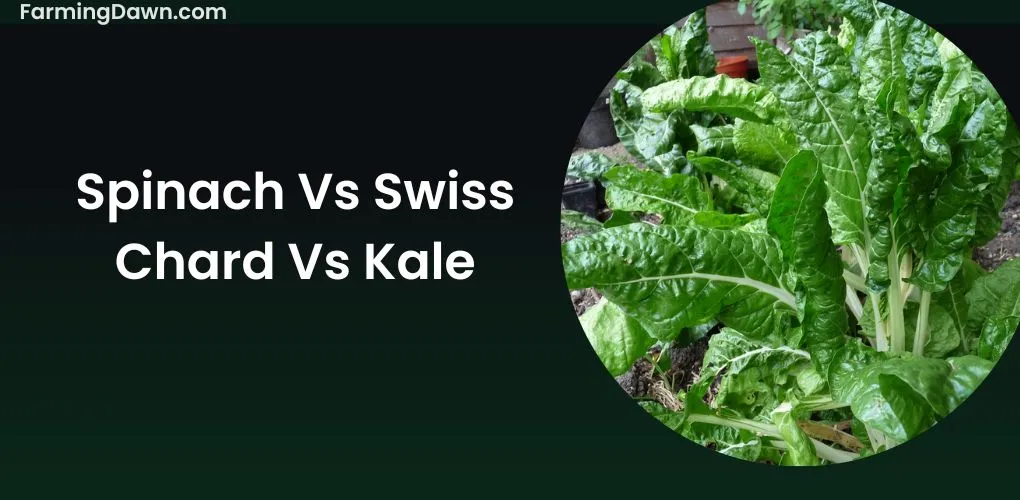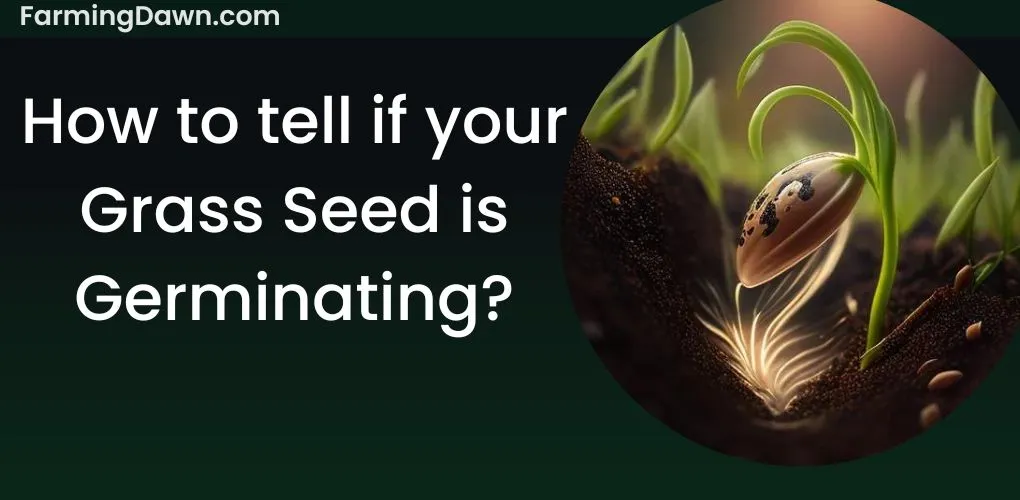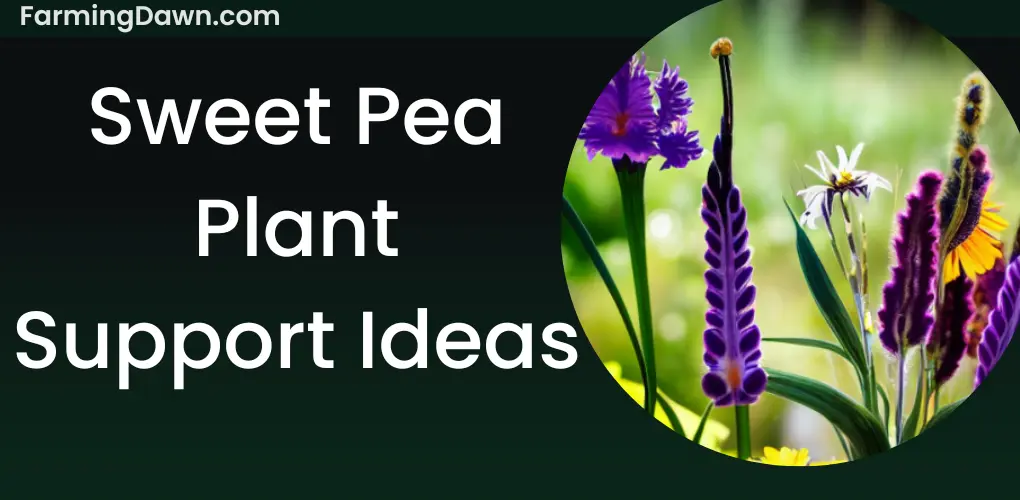When people talk about herbs for cooking or for medicinal purposes, the first thing that comes to mind is usually one of those two – lemon balm or mint. But what makes them so great? What do they have that other herbs don’t? How can using either of them help you feel more connected with yourself and with others?
Don’t worry, all of these questions will be answered in this post. Because today, we’re going to be talking about two of my favorite herbs: lemon balm and mint. I’m here to tell you why these two are special in their own unique ways, and how they can bring a sense of belonging to your life. Read on to find out!
Lemon Balm Vs Mint
Difference 1: Appearance
While Mint and Lemon Balm share an affinity for the color green, they also have distinctive characteristics that make them different plants. The subtle beauty of lemon balm leaves, with their delicately serrated edges and mild curve, lends a touch of refinement to any landscape.
On the other hand, the leaves of the mint plant, with their rough edges and slightly pointed ends, convey a feeling of wildness and vigor, lending the scenery a rustic beauty. The mint typically grows up to 2 feet tall while lemon balm usually reaches about 2-3 feet in height.
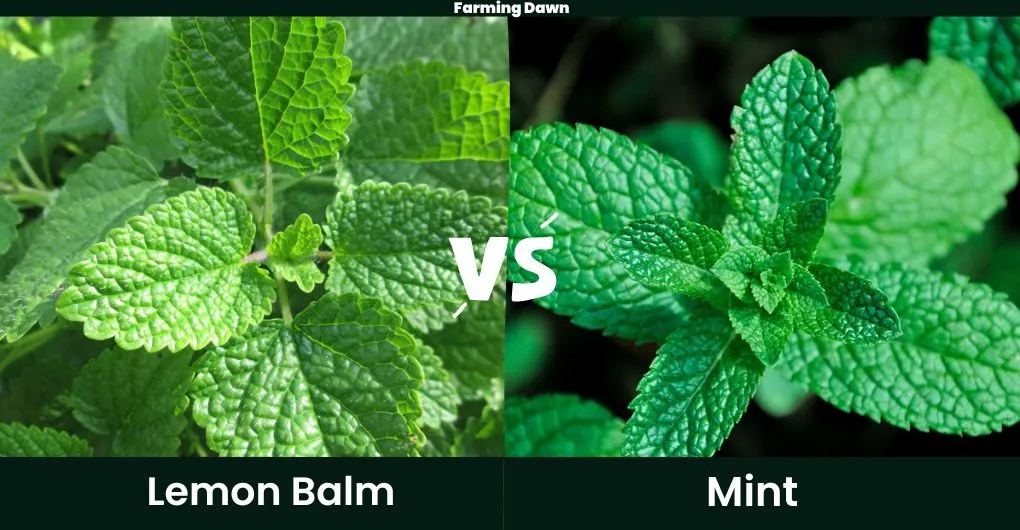
Difference 2: Flavor Profile
When it comes to flavor, lemon balm, and mint are two herbs that couldn’t be more different. Lemon balm has a unique citrusy taste with hints of lemony sweetness while the type of mint most commonly used in cooking gives off a cool but slightly bitter aroma.
Both make great additions to salads and drinks but depending on your preference one may be better than the other for certain dishes. The best way to decide which is right for you is by experimenting with both.
You can start simple with something like adding fresh lemon balm or mint leaves to tea or iced water to really get an understanding of how these flavors interact together. Before you know it, you’ll have some delicious herbal combinations!
Difference 3: Smell
Aromatically, lemon balm and mint are quite distinct. As members of the Lamiaceae family, these two plants have unique scents that range from mildly sweet to intensely pungent. Think of a summer night when you’ve been out in the garden picking herbs for dinner.
The zesty aroma of lemon balm is surprisingly refreshing while the mentholated scent of mint is unmistakable and invigorating. Each plant has its own defining fragrance – one which can really be appreciated when both leaves are crushed between your fingers and inhaled deeply.
When it comes to aromatherapy, each provides an array of benefits; Lemon balm brings calming comfort whereas mint offers a stimulating burst of energy – making them ideal ingredients for homemade products like bath bombs or lotions. In short, if you’re looking for herbal revival through smell alone then look no further than this dynamic duo!
Difference 4: Flower
Lemon balm and mint both are members of the mint family – Melissa officinalis for lemon balm, and Lamiaceae for many common varieties of mint. I find that they each have their own unique flavor profiles and uses in cooking, but there’s something else that sets them apart from one another: flower color!
Lemon balm has light yellow blooms while mint is usually white or purple in color. It’s not just aesthetics either; when using these herbs as natural remedies, you should be able to tell which one you’re dealing with at first glance!
Each herb has its own special properties, so knowing exactly what type you have can make all the difference when concocting an herbal remedy. So don’t forget about flower color when choosing your herbs!
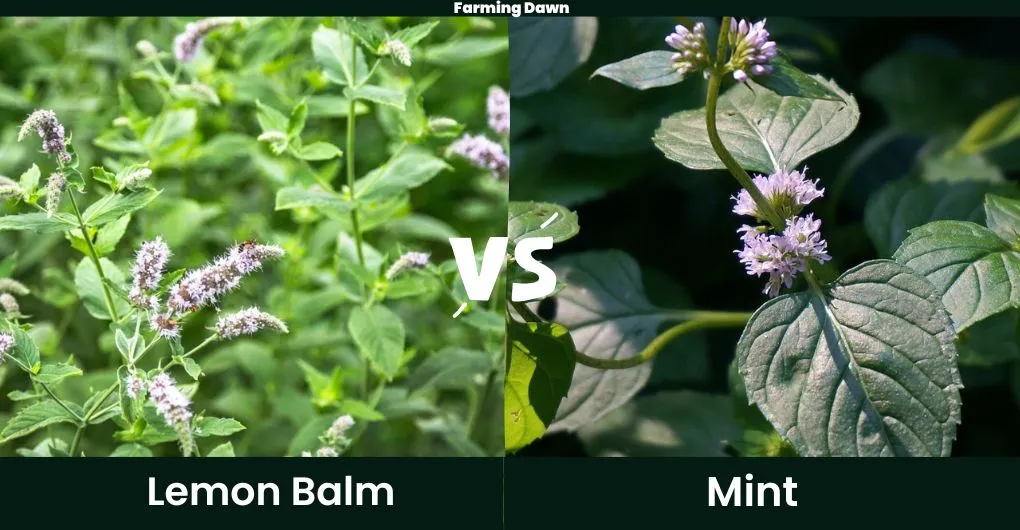
Difference 5: Nutritional Benefits
They are both excellent sources of vitamins C, A, and B6 as well as minerals such as iron, zinc, magnesium, and manganese. However, there is one major difference between the two – mint has much higher levels of these essential nutrients than lemon balm does!
Additionally, dried mint leaves can easily be added to tea or used in herbal medicine while fresh lemon balm should only be consumed if it’s grown organically (as its roots will not survive long on drained soil).
Lemon Balm Vs Mint Uses
Culinary Uses
Well, now that we’ve discussed the nutritional benefits of lemon balm vs mint, let’s move on to their culinary uses! Both herbs are incredibly versatile in the kitchen. Lemon balm is great for making teas and syrups due to its sweet flavor. It can also be added to salads or cooked with vegetables – it pairs perfectly with summer squash or green beans.
Mint has a more pungent taste and makes an excellent addition to sauces, dressings, cocktails, and desserts.
Medical Uses
It’s no surprise that both lemon balm and mint are popular herbs for medicinal purposes. Lemon balm has been used since ancient times to help relieve stress, improve mood, reduce inflammation, and treat indigestion.
Mint is known for its ability to soothe an upset stomach, alleviate nausea and headaches, as well as having anti-inflammatory properties. Both these herbs have a long history in folk remedies, with many cultures believing they possess healing powers.
People have traditionally consumed them either fresh or dried in teas and tinctures, although nowadays you can find these two herbs in everything from toothpaste to skin creams.
Cosmetic Uses
I’m gonna start this off by saying that both lemon balm and mint are great for skin care. Lemon balm is especially good at soothing irritated or sensitive skin, while mint can help with inflammation and redness.
If you’re looking to make a refreshing face mask or add some zing to your lip scrub, these two herbs have got you covered! I love making herbal infusions with them too – just steep the leaves in hot water until it cools down, then strain out the plant material before using it as a toner or aftershave lotion.
It’s a simple way to get all the benefits of their natural goodness without any nasty chemicals.
Uses In Cooking
From salads to desserts, these two herbs work miracles in the kitchen creating tantalizing flavors that will have your guests asking for more! Lemon balm is an excellent addition to many dishes due to its delicate citrus-like flavor and a subtle hint of sweetness.
Mint is also great for adding a refreshing burst of flavor with its distinctive herbaceous taste. Whether you are using them separately or combining them together, both herbs bring depth and complexity to any meal – making it something truly special that everyone will enjoy.
How To Grow Lemon Balm Vs Mint?
When it comes to growing lemon balm and mint, there are a few key differences to keep in mind. I’ve found that they both prefer well-draining soil, but lemon balm needs slightly more moisture than mint.
Sunlight is important for both, but mint needs more than lemon balm. Pruning can help them both stay healthy, and they can both be propagated using cuttings. Let’s discuss these steps in detail:
Growing Conditions
Growing lemon balm and mint is one of the easiest gardening projects you can take on! Both herbs prefer growing in well-draining, slightly acidic soil that’s rich in organic matter. They also love full sun to partial shade, although they might need a bit more shaded areas during the hotter months.
To ensure your plants get enough water, make sure you keep their soil moist – but not soggy – at all times. As far as maintenance goes, I like to trim my lemon balm and mint regularly so it doesn’t become too leggy or unruly.
And lastly, if you want to maximize growth be sure to add some compost or fertilizer every few weeks. It doesn’t have to be anything fancy either – just something that’ll feed their roots will do the trick!
With all this in mind, if you pay attention to soil quality and water needs for your lemon balm and mint, you’re sure to have success with these easy-to-grow herbs!
Frequently Asked Questions Related To Lemon Balm And Mint
Is Lemon Balm Or Mint Easier To Grow?
Neither is particularly difficult! Both of these delicious plants thrive in moderate climates with plenty of water and sunlight. Whether you want to add some zest to your recipes or just enjoy their calming scents, either one will provide a satisfying harvest.
Are There Any Differences In The Shelf Life Of Lemon Balm And Mint?
Lemon balm will last up to two months if stored correctly in an airtight container, whereas mint only lasts about one week before becoming unpleasantly dry. So, if you’re looking for some fragrant leaves that’ll stick around your pantry for a bit longer, go with lemon balm!
Are There Any Differences In The Cost Of Lemon Balm And Mint?
Both herbs have very similar prices in most cases – depending on where you buy them from. Mint tends to be slightly more expensive than lemon balm when it comes down to it.
Is Lemon Balm In The Mint Family?
Yes, Lemon Balm (Melissa officinalis) belongs to the mint family, Lamiaceae, along with other aromatic herbs like peppermint, spearmint, and basil.
Does Lemon Balm Spread Like Mint?
Yes, lemon balm spreads similarly to how mint does. It is crucial to monitor its development and, if required, take containment measures since it can spread quickly through rhizomes and self-seeding.
How Tall Does Lemon Balm Grow?
Depending on the environment and cultivation methods, lemon balm normally grows to a height of 2 to 3 feet (60 to 90 centimeters), however, this might vary.
Is Lemon Balm Perennial?
Yes, Lemon Balm is a perennial herb, meaning it comes back year after year.
Final Thoughts On Lemon Balm Vs Mint
As the alluring world of Lemon Balm and Mint reveals itself to us, showcasing their distinctive but alluring looks, lemon balm gives the yard a classy touch with its ethereal leaves and soft lemon aroma. While mint creates a vivid paradise with its rich vegetation and cooling menthol scent.
So, let us embrace the beauty of these marvelous herbs, savor their flavors, and celebrate the remarkable botanical wonders nature graciously bestows upon us.

